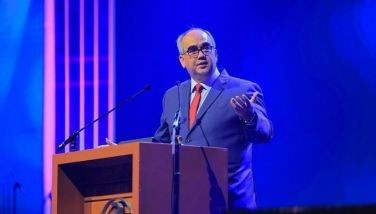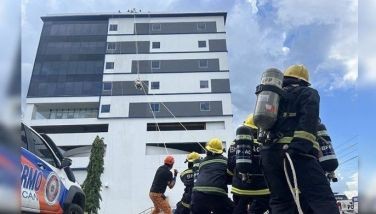Marker for De las Alas

It took the 2019 Southeast Asian Games to remind us of the importance of the Rizal Memorial Sports Complex’ role in the evolution of Philippine sports history. Better late than never as the Ninoy Aquino Stadium (NAS) and the Rizal Memorial Coliseum (RMC), long abandoned in decay, were resurrected, given a new lease on life and provided the stage for unforgettable moments in weightlifting, taekwondo and gymnastics during the conclave.
In this pandemic, the RMSC continues to play a critical role in our history, this time in alleviating the plight of COVID-19 patients, transforming both the NAS and the RMC into safe havens. The NAS was configured to accommodate 112 cubicles and as of last March 31, 1,642 patients had been taken in. The RMC was fitted to put up 97 cubicles and as of last March 31, 1,072 patients had been admitted. The Multi-Purpose Arena (MPA) in the PhilSports Complex was another PSC facility that was converted into an emergency center to receive patients. The MPA was modified to set up 132 cubicles and as of last March 31, had accepted 1,118 patients.
The RMSC’s relevance was brought to light in a recent letter sent by the late Antonio De las Alas’ daughter Menchu Concepcion who shared an article written by her late sister Ching Montinola on their father’s dream to build a sports stadium in the country. “My father was a member of Congress when he led the campaign to build a sports facility,” the article noted. “He worked for the regular annual appropriation of funds for the support of the PAAF (Philippine Amateur Athletic Federation, precursor of the Philippine Olympic Committee). As the secretary of Public Works and then as secretary of Finance, he, together with Mr. Jorge Vargas, raised the funds that started the construction of the complex. That dream became a reality which until now, is the Rizal Memorial Sports Complex that was inaugurated in 1934.”
De las Alas was PAAF president from 1955 to 1968 and headed several athletic delegations to the Olympics and Asian Games. “His obsession for additional sports facilities was anchored on the belief that sports activities must be decentralized,” the article continued. “The adoption of the system was brought about by the desire of the PAAF to rationalize the 17 sports over which it had jurisdiction (archery, badminton, baseball, basketball, boxing, cycling, fencing, football, gymnastics, shooting, softball, swimming, tennis, track and field, volleyball, weightlifting and wrestling). The other sports that he helped organize were bowling, chess, golf, judo, table tennis and yachting.”
When De las Alas passed away in 1983 at the age of 93, the Executive Committee of the PAAF awarded a posthumous citation for his distinguished service “in recognition and appreciation of his many substantial contributions to the PAAF, his splendid efforts in the physical development and character-building of the youth through sports, his positive contribution to the construction and expansion of sports facilities and his participation in Olympic and Asian Games meetings, thereby bringing honor and glory to the Philippines and to its people.”
To pay tribute to De las Alas, surely a commemorative marker or a plaque in his honor could be imbedded in a prominent place at the RMSC. It would be a special distinction to recognize the father of the country’s symbol of sports heritage. The De las Alas family would be thrilled if such a recognition is bestowed.
- Latest
- Trending
































